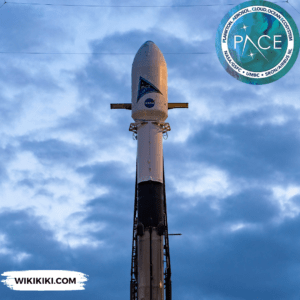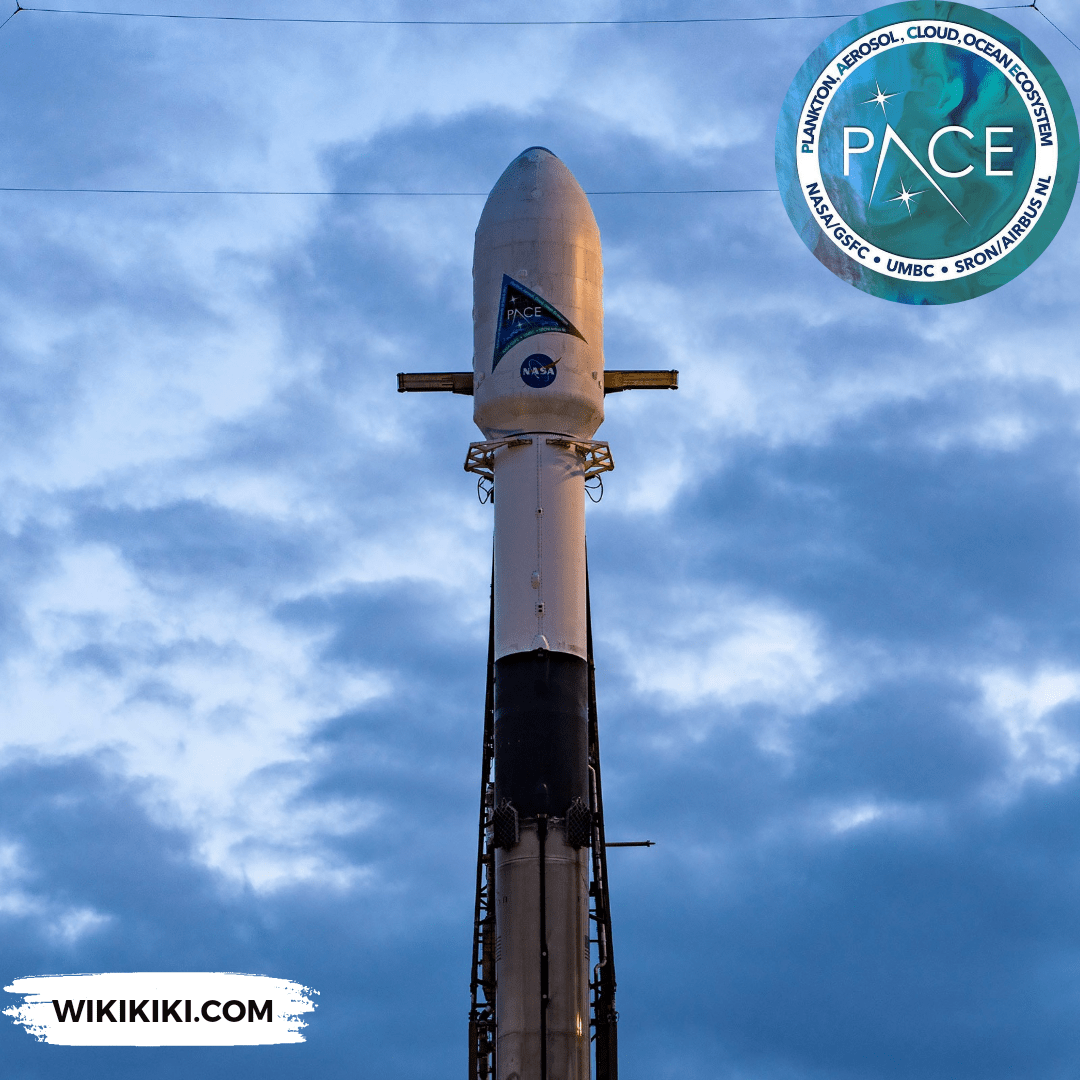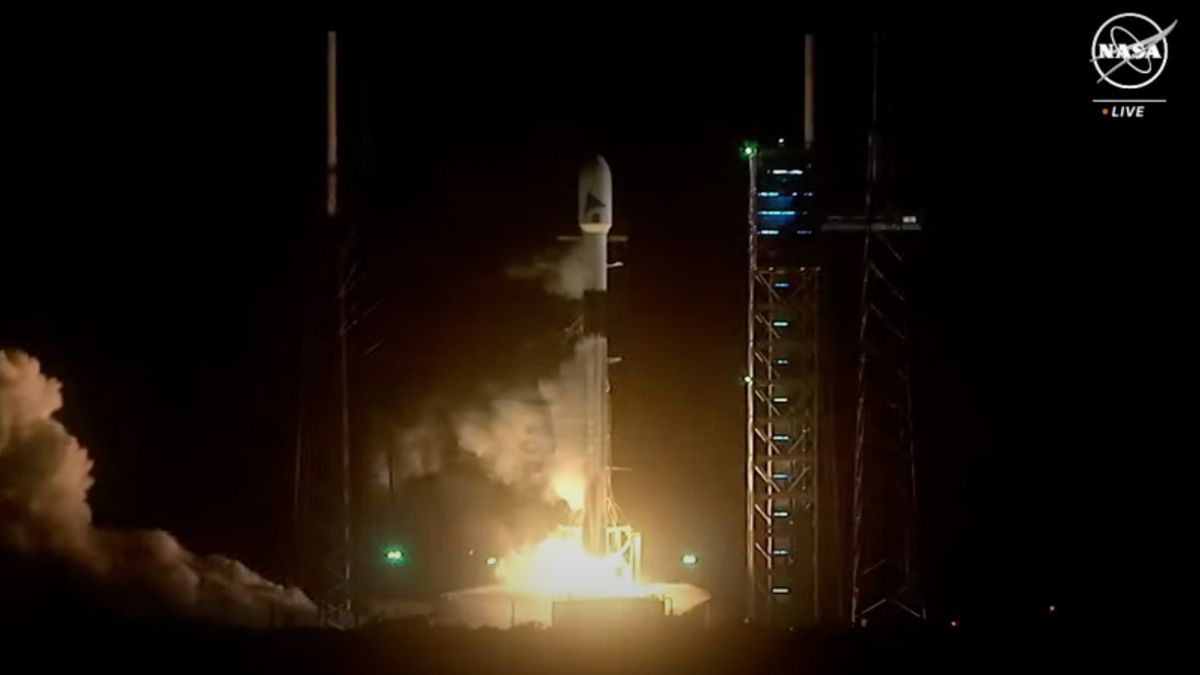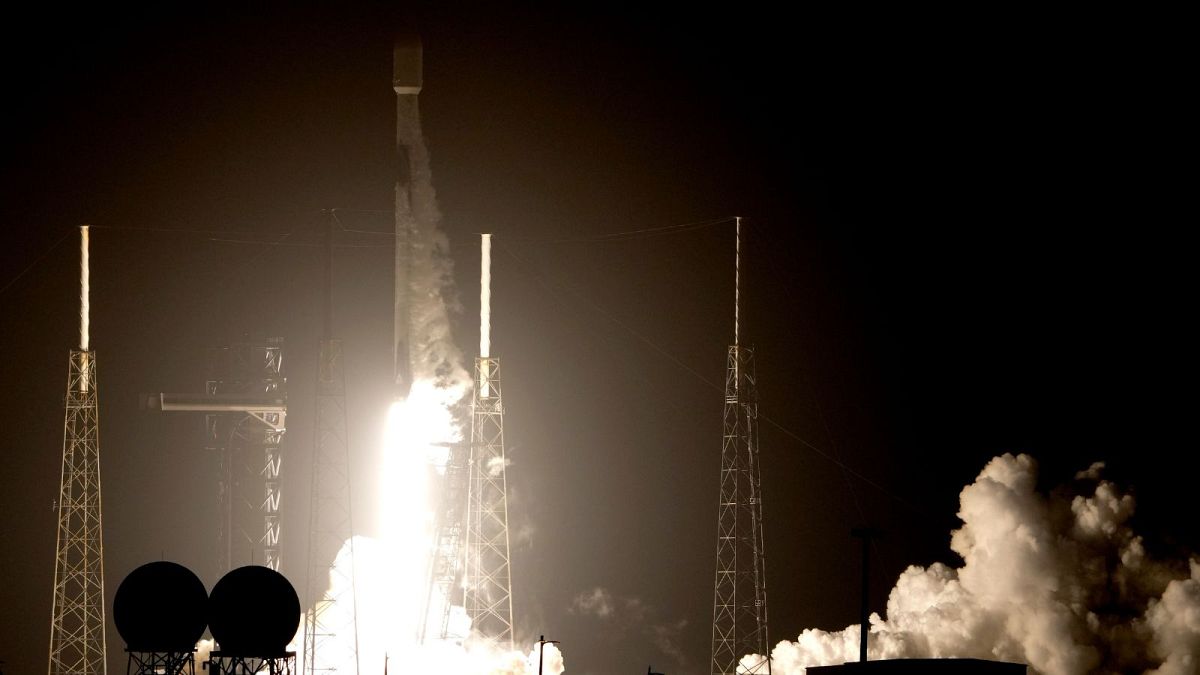NASA’s Plankton, Aerosol, Climate, ocean Ecosystem (PACE) satellite, planned to reveal mysteries of Earth’s interconnected systems, successfully launched into orbit at 1:33 a.m. EST on February 8, 2024.

Also Read: Russian Cosmonaut Oleg Kononenko Sets Record for Most Time Spent in Space
Riding aboard a SpaceX Falcon 9 rocket from Space Launch Complex 40 at Cape Canaveral Space Force Station in Florida.
PACE’s mission is to go into the microscopic world of marine life in the oceans and the minuscule particles suspended in the atmosphere.
By these tiny components, scientists hope to gain invaluable insights into how they influence climate change and the overall health of our planet.
NASA Administrator Bill Nelson hailed the successful launch as a step towards answering pressing questions about climate change and its impacts. With PACE in orbit, researchers expect access to data that will show the factors driving global warming.
The satellite is equipped with cutting-edge instruments designed to peer into both the depths of the oceans and the vast expanse of the atmosphere.
Its hyperspectral ocean color instrument will provide a view of water bodies, allowing for the tracking of phytoplankton distribution on a global scale.
For the first time, researchers will be able to identify different phytoplankton communities from space, offering insights into marine ecosystems and fisheries management.
PACE carries two polarimeter instruments, enabling the study of how sunlight interacts with atmospheric particles.
Also Read: ISRO’s Woman Robot Astronaut Vyommitra to Fly into Space
These observations will offer new perspectives on aerosols, cloud properties, and air quality at various scales, from local to global.
By combining data from the ocean color instrument and polarimeters, PACE is to show the complex interactions between the ocean and atmosphere and their response to a changing climate.
Karen St. Germain, director of NASA’s Earth Science Division, addressed the potential of PACE data when integrated with existing missions like the Surface Water and Ocean Topography mission.
By leveraging these synergies, NASA plans to advance our understanding of Earth’s system and provide actionable insights for coastal communities facing challenges.
Jeremy Werdell, PACE project scientist, expressed excitement about the mission’s prospects, saying the opportunities it offers for scientific discovery.
PACE holds promise for addressing critical issues such as sea level rise, marine heat waves, and biodiversity loss.
By monitoring phytoplankton, which has the main element in the carbon cycle and support marine ecosystems, PACE is to provide data for safeguarding food security and ecological balance.
Also Read: SpaceX to Launch Starlab Private Space Station using Starship
With temperatures rising and extreme weather events becoming more frequent, the need for accurate climate data has never been greater.
NASA’s Deputy Administrator Pam Melroy underlined the agency’s efforts to leveraging space-based observations for climate research.
PACE’s mission lies the quest to uncover the secrets of the microscopic both in the oceans and the atmosphere.
Equipped with advanced hyperspectral imaging capabilities, the satellite’s Ocean Color Instrument (OCI) will cast an eye over the world’s vast oceans.
By capturing over 100 wavelengths of light, OCI will have a portrait of phytoplankton populations, the unsung heroes of marine ecosystems.
Two polarimeter instruments, finely tuned to detect the subtle nuances of light polarization, will show the mysteries of atmospheric aerosols.
These microscopic particles, sourced from natural phenomena and human activities alike, wield influence over climate patterns and air quality.
By deciphering their composition and behavior, PACE plans to illuminate the interplay between aerosols, clouds, and global climate dynamics.
Also Read: Iran Launches 3 Satellites into Orbit Amid Tensions






















